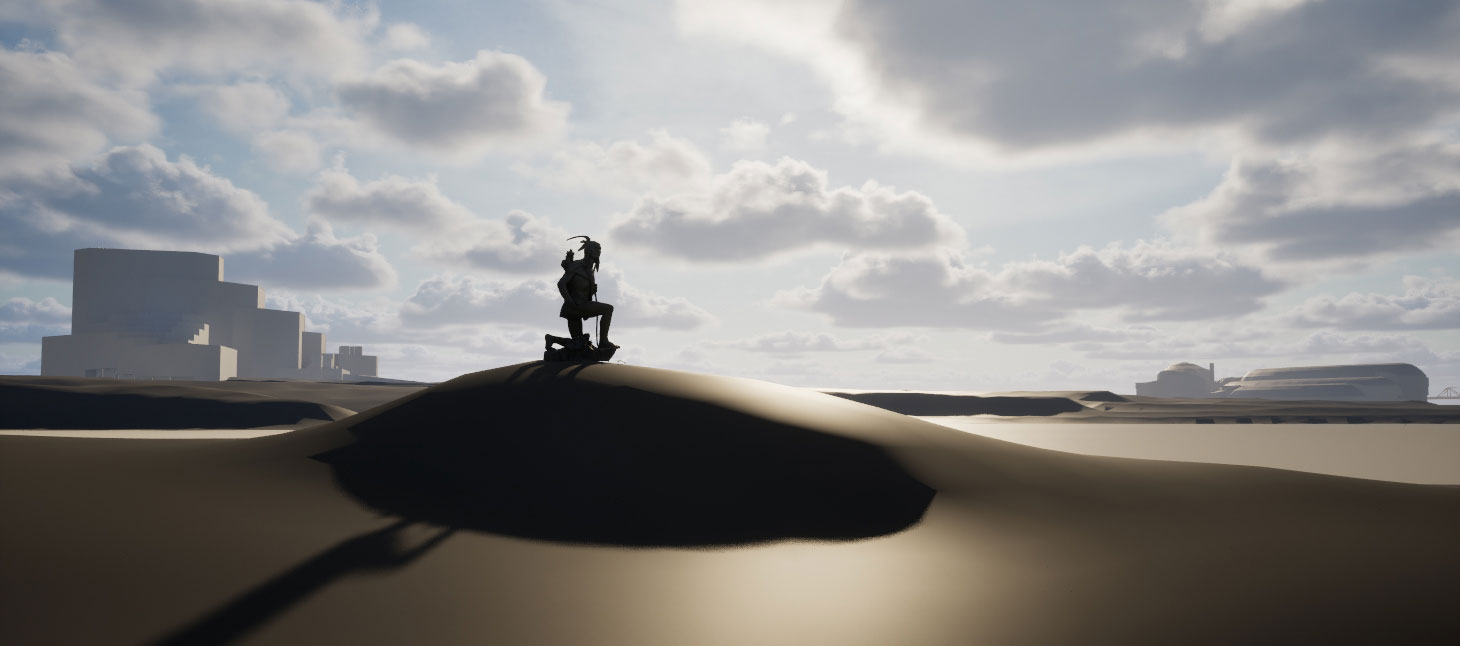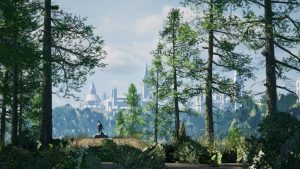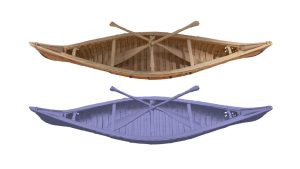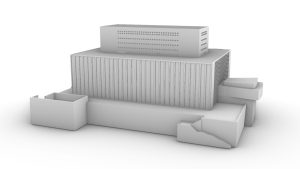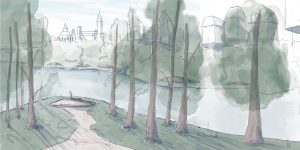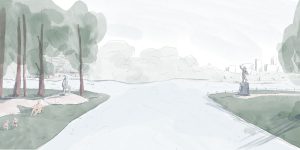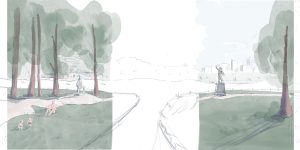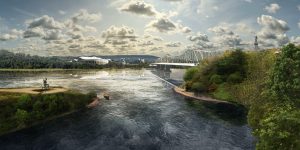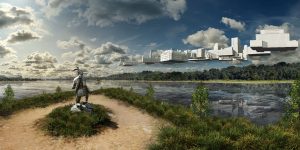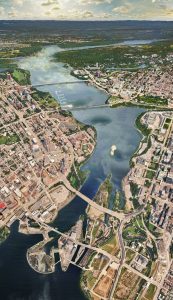JEFF THOMAS: Scout Relocation Project
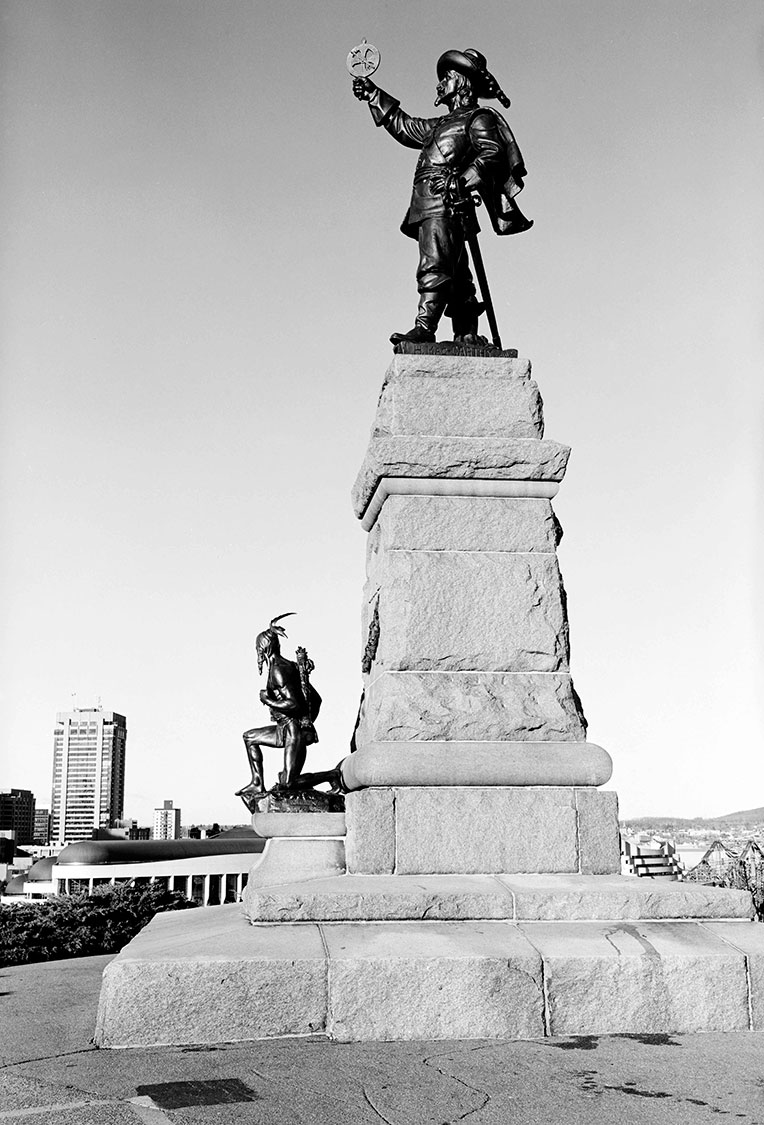 Jeff Thomas, Samuel de Champlain Monument (1992) Ottawa, Ontario. GPS: 45.4294, -75.70145
Jeff Thomas, Samuel de Champlain Monument (1992) Ottawa, Ontario. GPS: 45.4294, -75.70145
As part of the Scout Relocation Project (BIT Phase III) we have worked with the Carleton Immersive Media Studio (CIMS). The lab is part of the Azrieli School of Architecture at Carleton University. Rather than the original proposed laser cut wood maquette of the relocation site (Victoria / Asinabka Island), Jeff inquired if it would be possible to create a VR presentation. The CIMS team was up for the challenge. Through weekly virtual meetings (Jan – April), Jeff was able to provide constant feedback throughout the process. Along with their technical contribution, the CIMS team also contributed valuable feedback with regards to supporting narrative development in a digital setting.
We would like to acknowledge their incredible team and their generousity with their skills and talent: Petros Kapetanakis, the lead designer along with CIMS Directors Lara Chow and Stephen Fai. We would also like to acknowlege Sena Kurçenli Koyunlu for her work on the digital render of the birch bark canoe as well as Adam Wiegert who initially produced the digital rendering of Scout and assisted with the final details in the 3D print out of Scout that was presented in Jeff’s solo exhibition, Stories My Father Couldn’t Tell Me: Jeff Thomas Origin, at the Ottawa Art Gallery. With the production of the VR presentation, the 3D print of Scout can now be accompanied with the VR headset as the exhibition tours.
CIMS also provided the digital renderings that will be included in the speculative site proposal RFP and video, the final part of the BIT Phase III Scout Relocation proposal to be completed.
Included in the video and images below are as follows:
- Digital rendering of Scout in SketchFab media player (Credit: Adam Weigert)
- Video of 3D Print of Scout in situ at Ottawa Art Gallery (Video Credit: Leah Snyder)
- Site renderings for Scout Relocation (Lead Designer: Petros Kapetanakis)
- In-process renderings (Lead Designer: Petros Kapetanakis)
- Video capture of VR presentation (Video Credit & Lead Designer: Petros Kapetanakis)
- Stills of VR Presentation (Lead Designer: Petros Kapetanakis)
With the assistance of CIMS we were able to complete the vision started in 2020 with the 360 Matterport documentation of the Champlain and Scout sites (link here).
We also acknowledge Joel Rivard and Queenie Li of Carleton’s MacOdrum Library3D Print lab for donating their time and materials to 3D printing of Scout.
3D digital rendering of Scout (Credit: Adam Weigert). Use the hand icon to move the Scout figure around.
3D Print of Scout installed at Ottawa Art Gallery (Credit: Leah Snyder)
Video capture of VR Presentation (Video: Petros Kapetanakis)
![]()
Click on images to view larger
In-process images for VR Presentation (Credit: Petros Kapetanakis). Top to bottom: Scout on mound; Scout on Victoria / Asinabka Island; birch bark canoe rendering; Library & Archives Canada rendering.
![]()
Concept Sketches for Site Renderings (Credit: Petros Kapetanakis).
![]()
Final Site Renderings (Credit: Petros Kapetanakis)
![]()
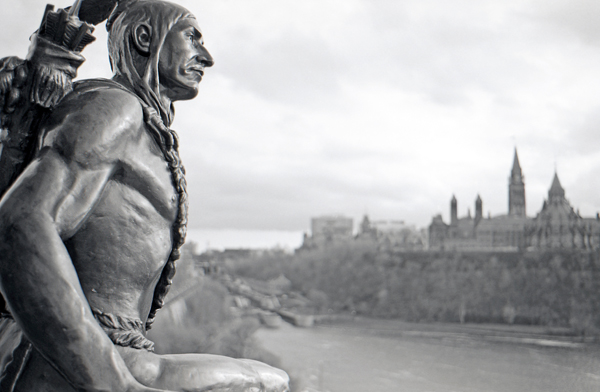 Jeff Thomas, Indian Scout (1992) Samuel de Champlain Monument, Ottawa, Ontario. GPS: 45.42947, -75.70147
Jeff Thomas, Indian Scout (1992) Samuel de Champlain Monument, Ottawa, Ontario. GPS: 45.42947, -75.70147
BIT PHASE III PROPOSAL
“While I stood next to the Indian figure at the Samuel de Champlain monument, I tried to imagine where this guy would go if he was liberated from this spot? Maybe he would begin a journey to find his tribe–but what would they look like today? So much time had passed, would he even recognize them? I imagined following the Indian on his journey and making a record of the places where he found his tribe.”
Jeff’s vision has been to move the figure of Scout to the shoreline of Victoria Island. Also known as Asinabka, the island is located in the middle of the Ottawa River between the Ontario and Quebec sides. When at the shoreline, one has a unique perspective of the Parliament Buildings as well as other government buildings that Jeff has used as locations for his Postcard for Indians series (link).
Asinabka has also been an important site for Indigenous activism. In 2012, it was the site where Chief Theresa Spence of Attawapiskat First Nation occupied while on her hunger strike, bringing more awareness to the Idle No More movement and reactions to Bill C-45. As with Nepean Point and Major’s Hill Park, the island is also under National Capital Commission (NCC) custodianship and has recently had its own revitalization program, partially opening up again to the public the summer of 2023.
Utilizing the digital documentation produced from 2016 – 2023 that includes photography, video drone footage, as well as 360 documentation of both Nepean Point where the Champlain monument was located and Major’s Hill Park where the Anishinabe Scout was placed in 1999, a site proposal for Scout (now renamed Kichi Zibi Innini) will be produced. The digital documentation also includes a 3D rendering of Scout that is an interactive digital presentation of the figure that was used to produce a 3D print out. The 3D rendering provides an opportunity to consider multiple ways to animate the figure of Scout, whether in a physical or digital landscape.
Scout has become an avatar for Jeff in the way he has metaphorically inhabited the figure of Scout in order to conceptualize the landscape surrounding him in what became his home over thirty years ago. With the 3D rendering, it becomes possible to produce digital environments where Scout can become an avatar for others, to see the landscape through the figure’s ‘eyes’ and through an Indigenous perspective. This has been a pedagogical device that Jeff has used throughout much of his practice, presenting a proxy – whether through an architectural frieze, monument or plastic figurine – to represent what is the experiential reality for Indigenous people in spaces where they have been, and continue to be, erased. Through Jeff’s travelogues and journals, his discourses with the archives, or engagements with the public, there is a constant positioning of the Indigenous experience as the starting point.
The speculative site proposal will also build on Jeff’s work addressing the impact that a 1979 car accident has had on his mobility, creating barriers for physically accessing the locations he began documenting early in his practice using analog photography. Digital technology has extended his capacity to produce his ongoing oeuvre as well as allowed more accessible platforms for others to engage and participate with.

